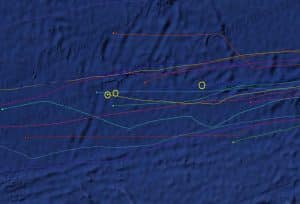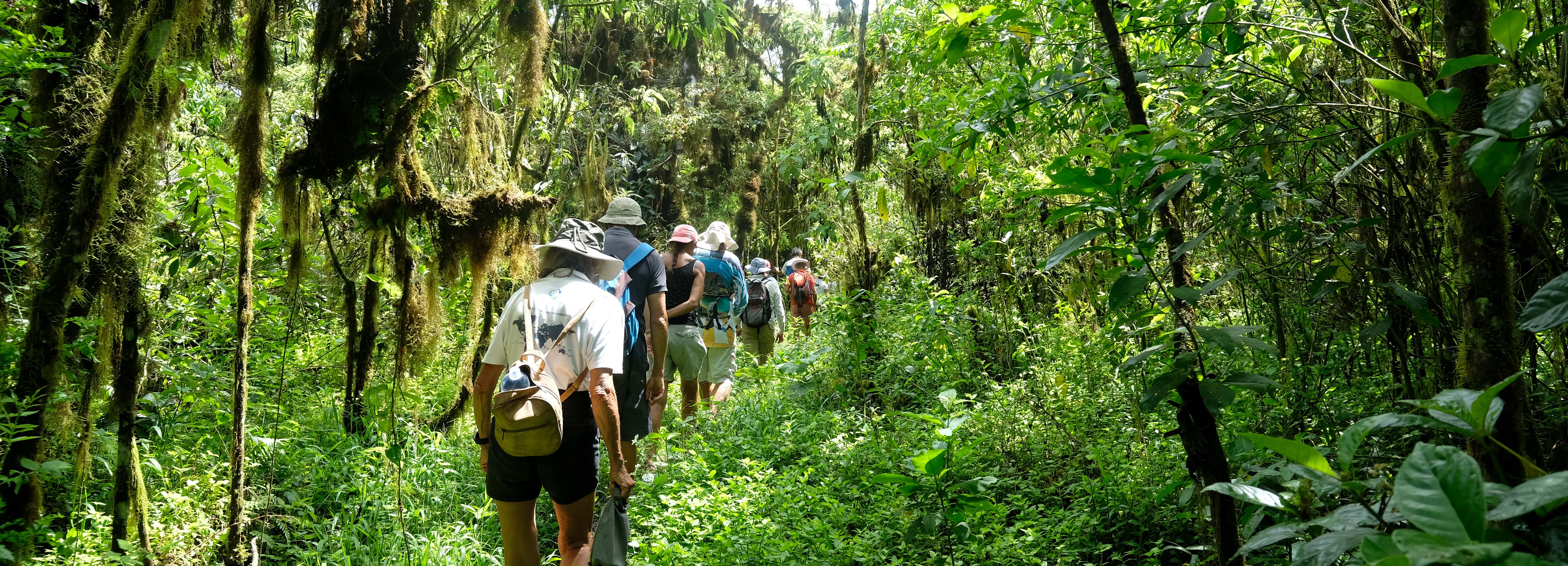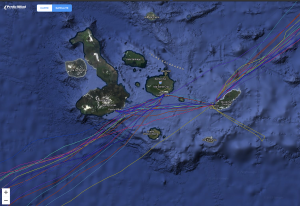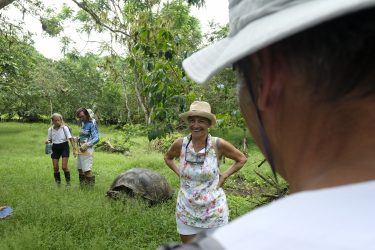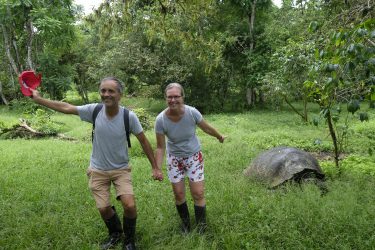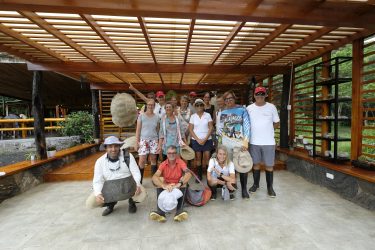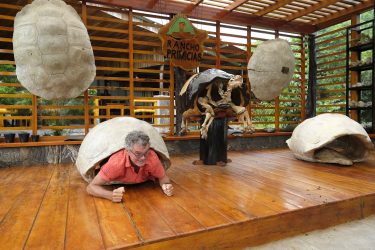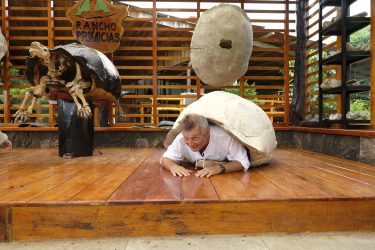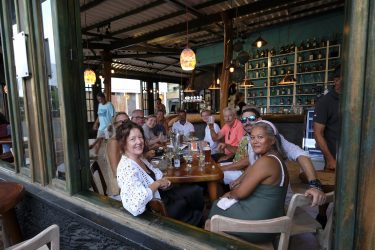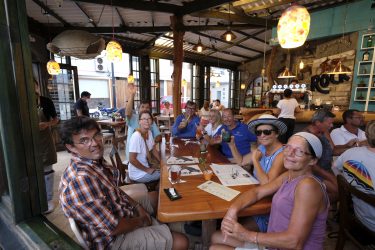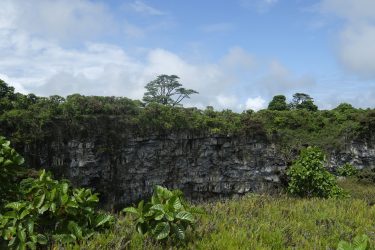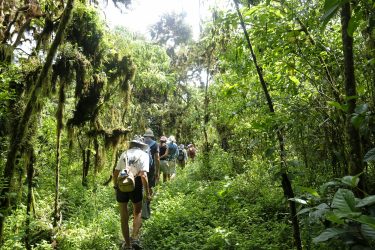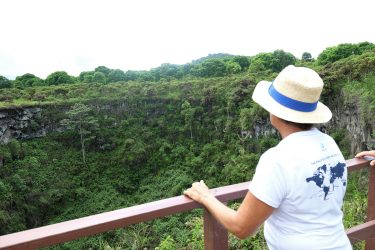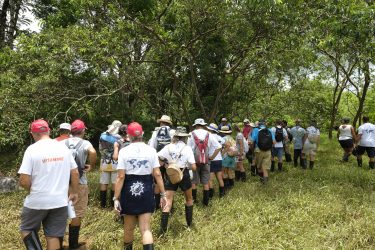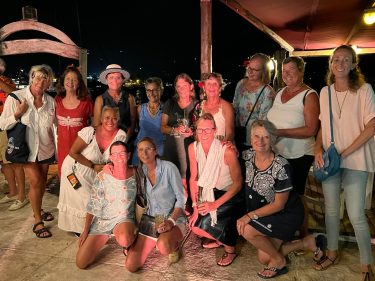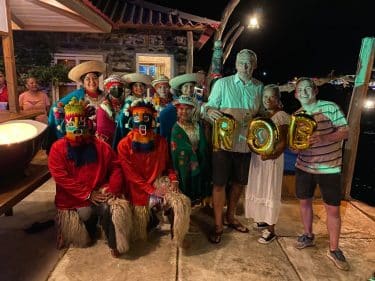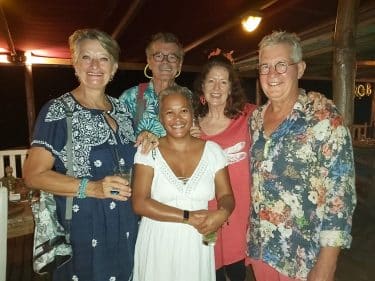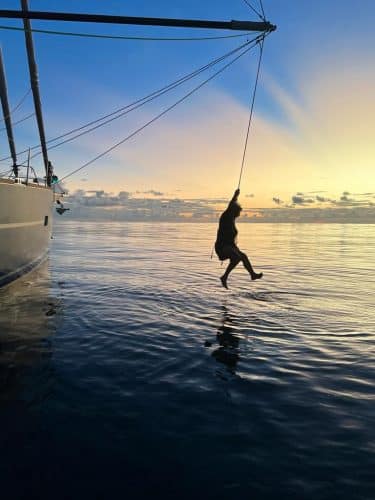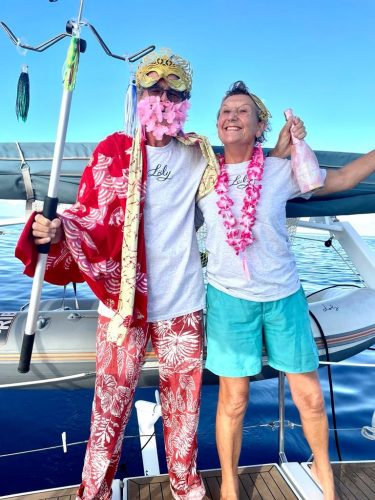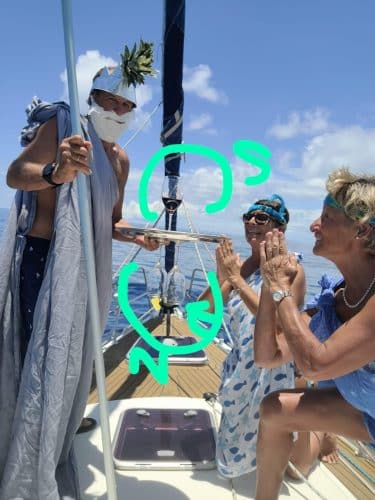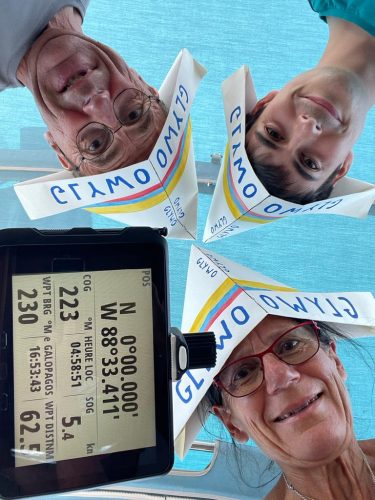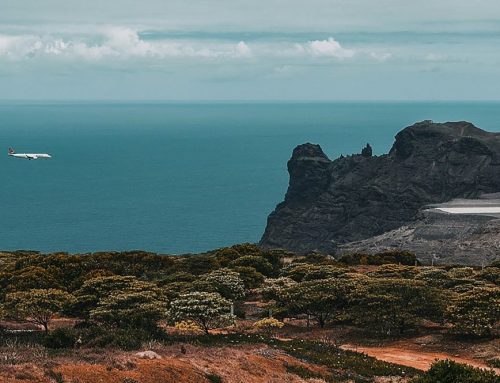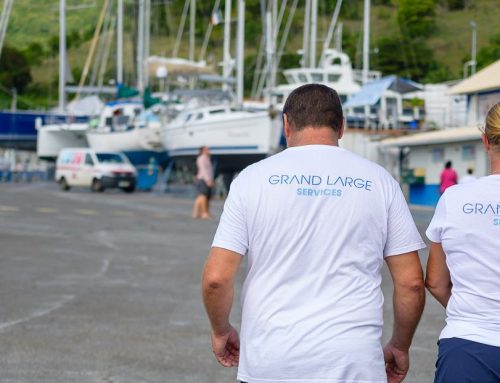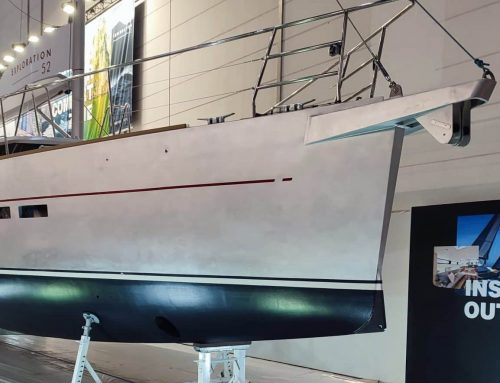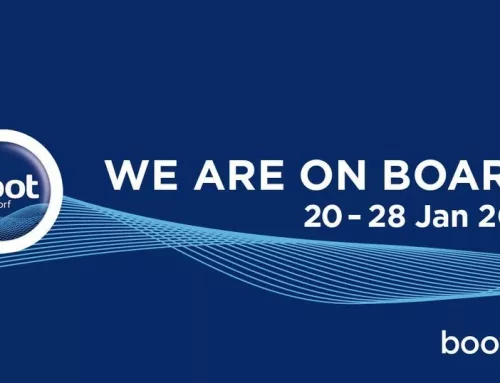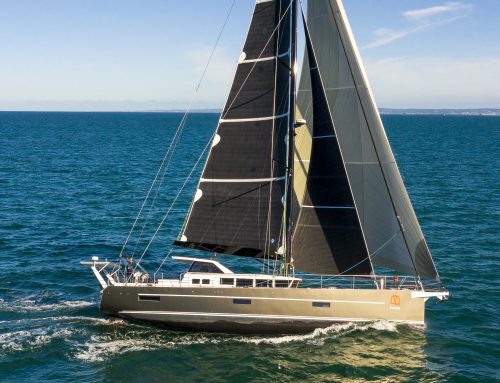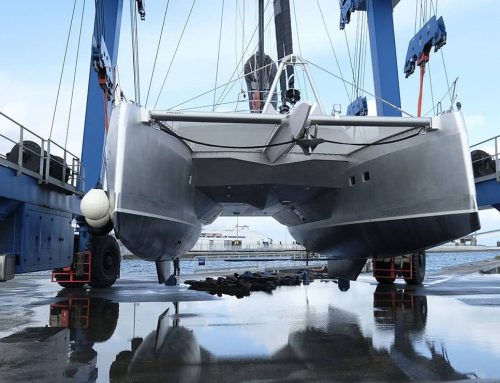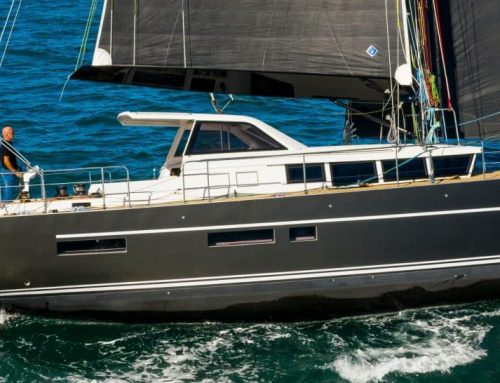A few days after passing through the Panama Canal, the Grand Large Yachting World Odyssey 500 rally offered a welcome stopover at the Galapagos Islands. This archipelago, renowned for its biodiversity, delighted the crews, with their keen interest in nature and cultural discoveries.
Having sailed for only a few weeks in the waters of the Pacific, participants in the Grand Large Yachting World Odyssey 500 were able to discover the Galapagos Islands, known to the Spanish-speaking world as the Enchanted Islands, or Las Encantadas.
The aluminum centreboarders, Garcia Exploration 52 named Blue Way, visited this archipelago. Other participants chose to sail directly to the Gambier Islands. The Grand Large Yachting World Odyssey 500 allows participating crews to choose their itinerary and certain stopovers, while at the same time providing them with the security of the organisation.
The crews who had opted for a stop at the Galapagos Islands landed first on San Cristobal Island, home to Puerto Baquerizo Moreno, capital of this Ecuadorian province. Some then disembarked at Puerto Villamil, in the south of Isabela Island, the largest island in the archipelago. Next, they visited Santa Cruz Island from its port Puerto Ayora.
Access is regulated to the Galapagos Islands – landings are strictly forbidden on some in order to preserve the ecosystems – which limits the opportunity for land-based excursions.
A natural site with unique features
‘A group rather of extinct volcanoes than of isles, looking much as the world at large might after a penal conflagration’. This description, given to the Galapagos Islands by the North-American writer Herman Melville in his 1856 short story ‘The Encantadas or Enchanted Isles’, is not very appealing. The Moby Dick author describes the reality he experienced in 1841 and in 1842 when, as a sailor on a whaling ship, he made two stopovers at the Galapagos Islands. And yet the Galapagos, discovered in 1535 by Europeans, have not ceased to fuel the imagination of sailors since the time of Melville.
Located at the meeting point of three oceanic plates, the Islas de los Galápagos archipelago is a hotspot, one of those places on Earth where there is continual tectonic and volcanic activity. The nineteen islands forming the archipelago are, geologically speaking, amongst the youngest bodies of land on the planet. As a result, they have a rugged terrain that makes most of them uninhabitable, or only on narrow strips of coastline. The coasts of these islands are subject to a cold-water current, the Humboldt current, which originates along the Antarctic and flows up to the Galapagos after passing along the coasts of Chile and Peru. The archipelago has a desert climate, both arid and hot, similar to that of Australian deserts according to the Köppen climate classification. Average temperatures are high, around 30°C during the hot season (January to May) and around 20°C during the cool season (June to September). This generates a high level of evaporation, greater than the total rainfall, as there is not a single river running on these islands due to the volcanic relief. Finally, the wind regimes are characterised by their inconsistency, as described by Melville: ‘Nowhere is the wind so light, baffling, and every way unreliable, and so given to perplexing calms, as at the Encantadas.’
Yet these harsh conditions have made the archipelago a site of major interest to anyone interested in the natural sciences.
A global sanctuary for biodiversity
Its climate, relief and isolation – not conducive to the establishment of a large population – and also its cold waters which are rich in fish, have allowed an exceptionally rich biodiversity to develop. This did not escape the notice of the English naturalist Charles Darwin who in 1835 spent more than a month on the Galapagos Islands during his five-year expedition around the world on board the HMS Beagle. Here, Darwin gathered a magnificent collection of land and sea birds, shells, fish and various reptiles, not to mention nearly 200 species of plants. However, it was in part by identifying a type of finch captured on one of the Galapagos Islands that Darwin founded a major scientific theory. This same finch was also found on other islands in the same archipelago, only a few dozen miles away. And yet it displayed clear physiological differences with the first finch. Darwin hypothesised that these birds, although from the same strain, had developed variations over time due to differences in environment, lifestyle and diet. The theory of evolution by natural selection, or evolutionary radiation, was born. A theory of evolution that is still in use today and is named after the naturalist: Darwinism.
Beyond this anecdote, the characteristics and history of the Galapagos Islands, which are closely linked to the development of a major scientific theory, have made them a key location for the natural sciences. To the extent that the archipelago is still today an iconic place for everything related to biodiversity and the preservation of species.
In 1978, the Galapagos Islands became the first UNESCO World Heritage Site, described as a ‘living museum and showcase of evolution of outstanding universal value’. And, since 1998, the archipelago has been home to one of the world’s largest marine reserves.
In this environment, highly protected from mass tourism, crews can benefit from choosing to sail in an organised fleet, like the Grand Large Yachting World Odyssey 500. All authorisations, visiting permits and other licences for access to the National Park have been arranged in advance by the rally organisation, leaving the crews to enjoy their visit.
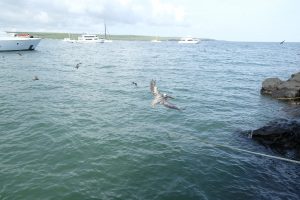
Las Islas de los Galápagos, or Giant Tortoise Islands
The Galapagos giant tortoises are a living emblem of this archipelago. It goes without saying that observing the tortoises was a highlight for the crews of the Grand Large Yachting World Odyssey 500. Of course, the crews enjoyed some surprising experiences with other animal species present on the islands, many of which are endemic species. One example is Galapagos sea lions trying to board the yachts via the quarterdeck, or trying to get into a tender. Or Peruvian pelicans, anchovy fishers living in colonies on rocky coastlines, provided that the Humboldt current runs alongside. Then there are the rare blue-footed boobies, of which more than half the total population live on the Galapagos Islands.
However, we didn’t hear from the crews of encounters with the famous Galapagos iguanas, either marine or land, or with the many shark species – some of them endemic – that roam the surrounding waters.
But, staying with reptiles, let’s go back to our giant Galapagos tortoises, a true emblem of the place and an endemic species, not to the whole archipelago but to some of its islands. The tortoises belong to a group of ten closely related sub-species, all having in common their generous measurements – up to almost 2 m and more than 250 kg for the most impressive specimens.
The main island, Isabela, alone has five sub-species, while only one has evolved on the smaller islands. The giant Galapagos tortoises, meticulously described by Charles Darwin, were sought after by sailors and pirates as early as the 16th century for their fine meat and food reserves they provided on board. Fortunately protected today, they are still a famous attraction and some of the Grand Large Yachting World Odyssey 500 participants couldn’t resist testing the solid shelter provided by their shell.
A friendly reunion
There, on Friday 25 March, they took stock of their individual needs in terms of fuel, and fresh food supplies, as well as reviewing the administrative procedures for leaving the Galapagos Islands and consequently the territory of Ecuador. The organisation had even ensured delivery of spare parts directly from France in the luggage of a shipyard representative.
An Ecuadorian excursion
The excursion organised the next Sunday on Santa Cruz Island further reinforced the sense of unity and good feeling between the crews. A trip to the National Park to discover the flora and the equatorial forest, a visit to the lava tunnels and also one to a tortoise breeding and conservation farm were all very popular with the participants. Equally popular was the discovery – this one in terms of taste – of various fruits and breads and local cheeses, one quite similar to mozzarella, which made a great lunch for the day’s explorers.
Everybody was aware of how lucky they were to be able to visit the Galapagos Islands in these privileged conditions. Today, this archipelago is attracting an increasing number of tourists, to the extent that this is posing a threat to its unique natural environment. All these activities were, nonetheless, undertaken in an excellent spirit, with crews increasingly getting to know each other and socialising with each other and with members of the organisation.
The call of the sea is never far away.
On Monday, it was back to serious business, with the preparation of the boats for the crossing to the Marquesas Islands, 4,000 miles away! After intense preparations including the cleaning of the boats, the time had come to celebrate this visit with a party, organised for Tuesday 29 March, the day before the big departure.
This event was carefully planned by the organisation, with traditional dances, dinner for the sailors and a much-awaited ceremony rewarding the crew with the most original photo of crossing the Equator.
The next morning, following this festive celebration, the crews set sail towards the Marquesas Islands. This archipelago in French Polynesia is an official stage of the Grand Large Yachting World Odyssey 500 for all of the crews. Each of the navigators wished their peers a safe crossing, knowing that they could count on each other if the need arose.
So there was little apprehension about tackling a three-week navigation, the longest stretch without seeing land for many of the crews of the Grand Large Yachting World Odyssey 500. This crossing will be carried out almost in a straight line, initially heading south-west to pick up the north-easterly trade winds. Then, after about ten days at sea, the trajectories will curve, heading 260°, aiming for the island of Nuku Hiva, situated in the north of the Marquesas archipelago of which it is the administrative centre. We will catch up with the crews once they have anchored there. Until then, you can check their position on the rally website.
